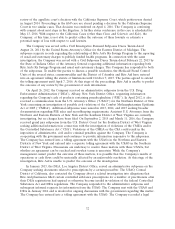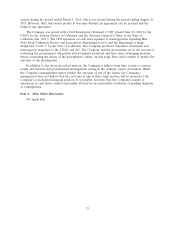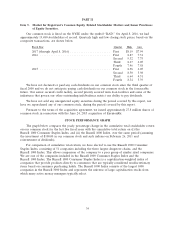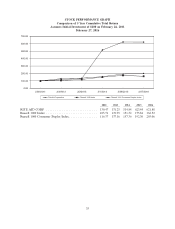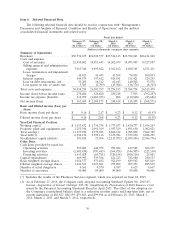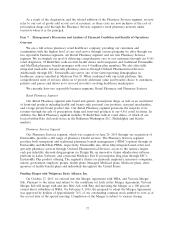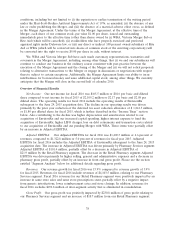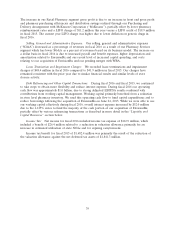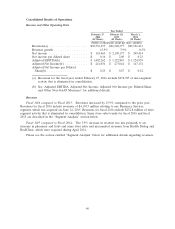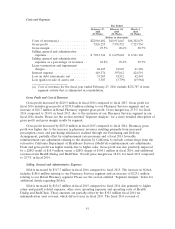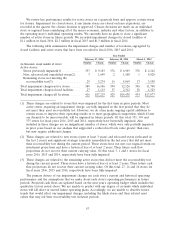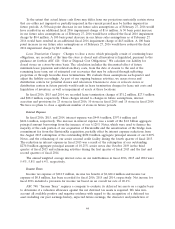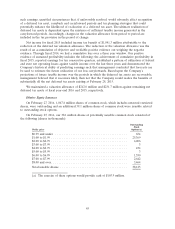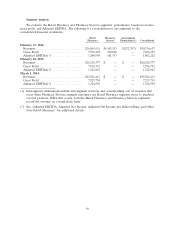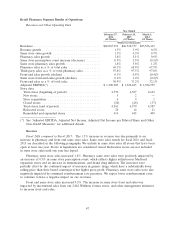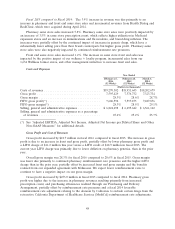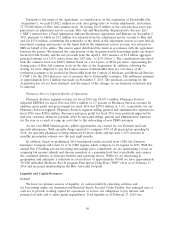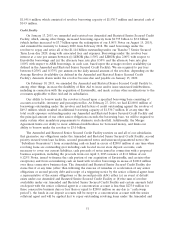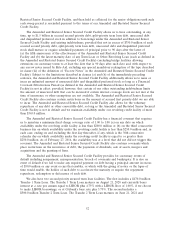Rite Aid 2016 Annual Report Download - page 42
Download and view the complete annual report
Please find page 42 of the 2016 Rite Aid annual report below. You can navigate through the pages in the report by either clicking on the pages listed below, or by using the keyword search tool below to find specific information within the annual report.$30.5 million of tax indemnification assets resulted from our settlement with the IRS associated with a
pre-acquisition Brooks Eckerd tax audit, and was offset by an income tax benefit.
Lease Termination and Impairment Charges
Impairment Charges:
We evaluate long-lived assets for impairment whenever events or changes in circumstances indicate
that an asset group has a carrying value that may not be recoverable. The individual operating store is
the lowest level for which cash flows are identifiable. As such, we evaluate individual stores for
recoverability of assets. To determine if a store needs to be tested for recoverability, we consider items
such as decreases in market prices, changes in the manner in which the store is being used or physical
condition, changes in legal factors or business climate, an accumulation of losses significantly in excess
of budget, a current period operating or cash flow loss combined with a history of operating or cash
flow losses or a projection of continuing losses, or an expectation that the store will be closed or sold.
We monitor new and recently relocated stores against operational projections and other strategic
factors such as regional economics, new competitive entries and other local market considerations to
determine if an impairment evaluation is required. For other stores, we perform a recoverability
analysis if they have experienced current-period and historical cash flow losses.
In performing the recoverability test, we compare the expected future cash flows of a store to the
carrying amount of its assets. Significant judgment is used to estimate future cash flows. Major
assumptions that contribute to our future cash flow projections include expected sales, gross profit, and
distribution expenses; expected costs such as payroll, occupancy costs and advertising expenses; and
estimates for other significant selling, and general and administrative expenses. Additionally, we take
into consideration that certain operating stores are executing specific improvement plans which are
monitored quarterly to recoup recent capital investments, such as an acquisition of an independent
pharmacy, which we have made to respond to specific competitive or local market conditions, or have
specific programs tailored towards a specific geography or market.
We recorded impairment charges of $17.2 million in fiscal 2016, $14.4 million in fiscal 2015 and
$13.1 million in fiscal 2014. Our methodology for recording impairment charges has been consistently
applied in the periods presented.
At February 27, 2016, approximately $2.1 billion of our long-lived assets, including intangible
assets, were associated with 4,561 active operating stores.
If an operating store’s estimated future undiscounted cash flows are not sufficient to cover its
carrying value, its carrying value is reduced to fair value which is its estimated future discounted cash
flows. The discount rate is commensurate with the risks associated with the recovery of a similar asset.
An impairment charge is recorded in the period that the store does not meet its original return on
investment and/or has an operating loss for the last two years and its projected cash flows do not
exceed its current asset carrying value. The amount of the impairment charge is the entire difference
between the current carrying asset value and the estimated fair value of the assets using discounted
future cash flows. Most stores are fully impaired in the period that the impairment charge is originally
recorded.
We recorded impairment charges for active stores of $16.1 million in fiscal 2016, $12.1 million in
fiscal 2015 and $11.7 million in fiscal 2014.
42


